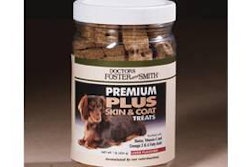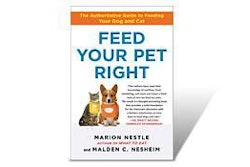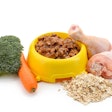
What do all of these factors have in common?
- Increasing gasoline prices;
- Increased use of grains and fats for biofuels;
- Decreased poultry production;
- Reduced and tight ingredient inventories;
- Climatic conditions bringing storms, heavy rain, fires and flooding; and
- Increased humanization of foods.
Each of these is a domino in the petfood ingredient market. The days of US$2-per-bushel corn seem a faint memory for those of us who have been in the petfood business for many years. Today, corn prices are over US$7 per bushel, with some experts projecting a rise as high as 35% over the next year.
The decision to use US corn crops to produce ethanol for automobiles concerned many of us (approximately 35% of corn is used in ethanol production) and has become a domino on the prices of other ingredients and products. Wheat and soy prices increase along with corn prices because farmers replace their acreage with corn. In turn, this drives up feed/food production costs and potentially will reduce production. All of this will lead to increased prices of meat, milk and eggs and will be felt in the petfood industry.
Additionally, unstable and rising fuel costs will increase manufacturing and logistics costs throughout the pipeline. Using fats as biodiesel will likely reduce inventories necessary for the petfood industry. Adding insult to injury are the unexpected natural phenomena (rain, wind, storms, floods, earthquakes and fire). All of these reduce or slow farm or fleet output/harvest, destroy potential inventories and reduce delivery.
Further complicating the situation, the humanization of petfood products has increased the use of some ingredients (e.g., pea, potato, chicken meal) with limited inventories while demonizing the use of more common ingredients (e.g., corn, wheat, soybean) with larger inventories. Add to this a greater demand for export and increasing quality standards, regulations and inspections—the domino effect is profound.
What can a petfood company do before the dominoes fall? A simple answer is to build a comprehensive business plan covering all phases of the business and focusing on efficiency, cost containment and planning. If your company is a petfood producer, it must make sure the pipeline of ingredients is connected to the goals of marketing/sales. Communication between groups is more vital than ever. Providing quality ingredients to production is as critical to the fulfillment of the business plan as any marketing/sales campaign.
More importantly, a good business must become more proactive and less reactive. Don’t wait for the dominoes to fall and reduce the company’s potential. In recent years, short supplies of ingredients (e.g., chicken meal, fish meal) have unexpectedly hit companies quite hard. A proactive business:
- Builds relationships with ingredient suppliers, increasing communication to know inventories, production and quality issues;
- Plans ahead to see what ingredient options might be available in case an ingredient becomes tight or unavailable and what flexibility exists in the formulations; and
- Communicates, plans, evaluates and finally reaches out for new input—never believing you have it all solved.
If your company is not a petfood producer but rather contracts with one or more of the many fine toll manufacturers, the same pathway is important. However, this means working more closely with your toll manufacturing company to know its issues ahead of time and better understand the same proactive position discussed above.
Some of the immediate, shorter-term choices with falling dominoes include:
- Price increases. With increasing ingredient prices comes the unavoidable increase in the final finished food or treat price. While in times past, this might have happened annually or with a shift in ingredient use, we might see prices increase much more often in the future.
- Package size and density. Another choice is to reduce package sizing or decrease density. Minor changes to package volume are less noticeable, and if coupled with a lighter density, the package seems the same. All of this helps minimize the perceived impact to the consumer.
- Formulation review. Oftentimes, petfood products are over-formulated past guarantees. This increases cost-of-goods and can overuse some key, higher-priced ingredients. Projections should be made for best use of potential inventories as well as tightened up formulations. This can reduce costs of formulas and help reduce price increases.
- Brand review. Falling dominoes should force a review of the purpose of each ingredient used. Some ingredients may be too expensive and need adjustment. Some ingredients may be unnecessary in supporting the brand image and overall nutritional profile. The purpose is to reduce the cost-of-goods while maintaining the brand image. All of this must be kept in balance with packaging inventory costs.
- Production review. Equally important is a specific review of production focusing on issues with ingredient handling and delivery, inventory management, production throughput, yield, quality hurdles and contaminations. As dominoes fall, this is vital to improve efficiency and manage costs.
Those who grasp these issues and implement a proactive posture will be the ones most likely left standing when future dominoes fall.
















